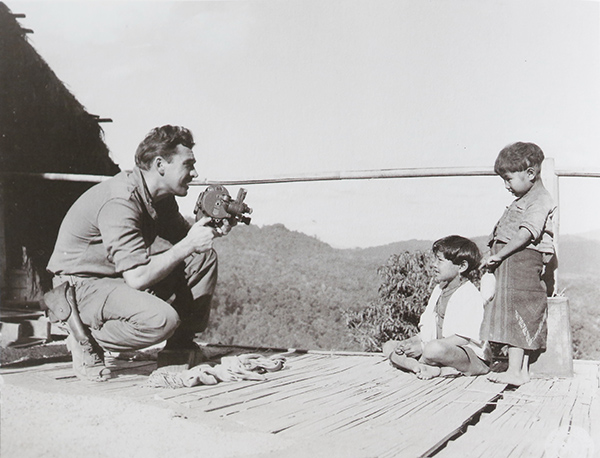Cameras and carbines capture life during wartime
By Zhao Xu (China Daily) Updated: 2015-07-30 07:57
|
A soldier-cameraman shoots footage of local children. Photo Provided to China Daily |
'Soldiers and artists'
Sydney Greenberg arrived in Kunming, the capital of Yunnan province, at the end of 1943 and was "welcomed by another air raid", as he noted in his diary. The 23-year-old photographer had just spent more than a month at sea, accompanied by his comrades in the 164th Signal Photo Company. When the vessel reached India, the 250-strong company - officers, other ranks, photographers and darkroom technicians - was divided into two equal groups. One group stayed in India, while the other, including Greenberg, headed to China.
Referring to the men of the 164th Signal as "soldiers and artists", Niu Zi, a documentary filmmaker and amateur historian, said the company's photos bear witness to the neglected history of the war in the CBI.
"During the war, the US army sent camera companies to all their overseas battlefields. In that sense, the 164th Photo Company was not special. However, bearing in mind that cameras were very much a rarity in that part of China in the 1940s, the black-and-white photos and movie footage constitute not just footnotes to history, but history itself," he said.
The bulk of the company's images are housed at the National Archives and Records Administration in Washington, and in 2010 Niu and some friends spent two months at the archives searching, photocopying and recording everything they could find related to China and the CBI during WWII.
Yan Huan, whose grandfather, Pan Yukun, fought in the CBI as a general in the Chinese Nationalist Army, accompanied Niu to Washington. "There were an estimated 23,000 pictures in total. Almost all of the ones labeled 'Signal Corps' or 'US Army Photo' can be attributed to the click of a camera belonging to the 164th Signal Photo Company," he said.
The photographers were truly "embedded", long before the word became popular in modern warfare. "My dad used to say: 'We lived in the same conditions as the Chinese. We ate, drank, slept and dressed as if we were the Chinese. When they didn't bathe or wash, we didn't either, so eventually we smelled the same'," Philip Greenberg said.
Most of the time, the US soldiers dressed like Chinese infantrymen, right down to the rope sandals they wore on their feet - and with good reason."The Chinese told them that they shouldn't keep wearing their US-issued uniforms - the Japanese actively sought out the highest-ranking US personnel in the command and shot them," Philip Greenberg said. "It wasn't long before my dad's captain, who wore a US Army helmet, was killed by a Japanese sniper."





